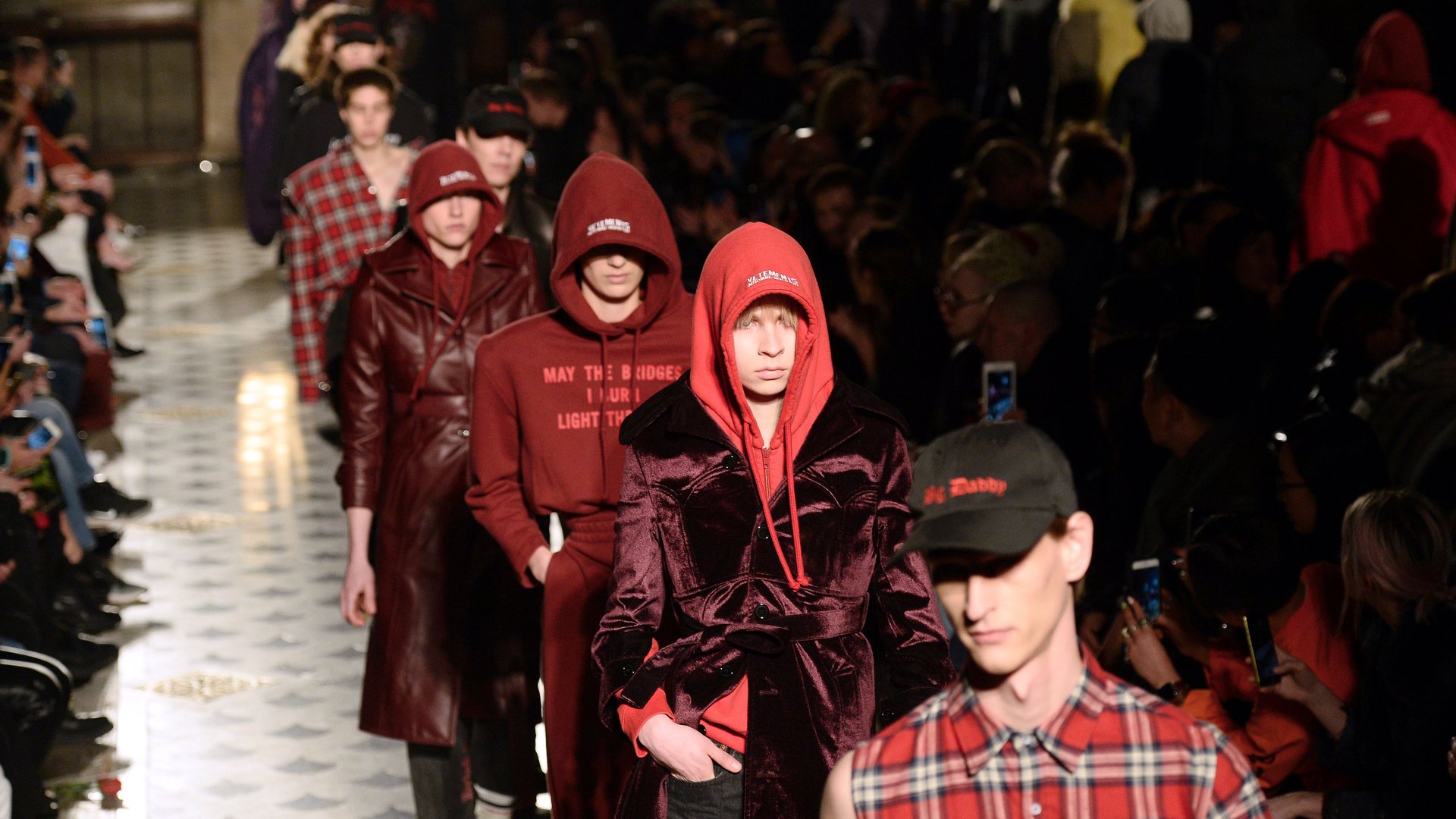A Paris brand has fashion’s elite scrambling for its $800 hoodies
For more than a year, a small, Paris-based label has been rapidly bubbling up in the talk of fashion insiders. Now, Vetements—the name simply means “clothes” in French—is no longer a secret. Just a few seasons old, it already sells to 135 stores around the world.


For more than a year, a small, Paris-based label has been rapidly bubbling up in the talk of fashion insiders. Now, Vetements—the name simply means “clothes” in French—is no longer a secret. Just a few seasons old, it already sells to 135 stores around the world.
Its biggest successes are hoodies, which come in a few different variations and frequently cost around $800. Despite the price, they keep selling out, and are a common sight on the streets of Paris and New York. They’re now status symbols, and the reason is a case study in how to market a brand. Here are some key ingredients:
Design
Not all Vetement hoodies are alike, but they share common traits including cotton fabric that’s almost twice the weight of typical sweatshirt material—nearly 480g, versus 240g. Most notable are the exaggerated proportions, such as oversized, dropped shoulders and extra-long sleeves. The hoodies are also printed with prominent graphics. One is printed with Leonardo DiCaprio and Kate Winslet in Titanic, and another bears the Vetements logo rendered to look like the title of skate magazine Thrasher.
The deliberately gritty, ungainly look subverts the idea of luxury fashion—boosting its cool factor among fashion kids—and along with the graphics, makes the hoodies stand out in a crowded market. It helps to differentiate the product, and the distinctive look is invaluable to shoppers who want a brand that gets them noticed and, ideally, snapped by a photographer. Yes, hype is a big part of the attraction, but it wouldn’t matter if the garments didn’t offer a genuine appeal.
Exclusivity
Like plenty of luxury goods makers, Vetements keeps production runs small to increase demand. “In order to make people want something, you need to make scarcity,” Guram Gvasalia, the label’s CEO, told AFP. “Every single piece in our collection is going to be a limited item.” Customers know if they don’t buy the piece they want, it may not be available.
The price tag makes it a typical “Veblen good,” limiting the audience. Gvasalia has said the price is related to the quality and amount of fabric needed for each sweatshirt, as well as the high cost of their factories. But part of the price tag is probably a markup added just because customers will pay it, as in the case with many $800 sweatpants on the market.
Insider status
Although the brand has the air of an outsider label, working apart from the fashion industry, behind it are at least eight fashion veterans, most of whom remain anonymous. The group’s most visible member is its leader, Demna Gvasalia (brother of CEO Guram), who has held positions at Louis Vuitton and Margiela. Among its earliest supporters were stylist Lotta Volkova and rising fashion star Gosha Rubchinskiy, whose label Comme des Garçons has produced and distributed since 2012. The connections helped establish the brand and its hoodies among influential fashion insiders early on.
The hoodies’s oversized silhouette tapped into a growing trend, seen from designers such as Haider Ackermann, and put the brand on the radar of more famous names, including Kanye West and Rihanna. They and the other well-known people since spotted in Vetements hoodies have a strong influence on the millions that follow them online. The exposure these celebrities offered the brand just by wearing it helped expand the customer base well beyond the initial core audience. Balenciaga hiring Demna Gvasalia as its new creative director also lent Vetements more credibility.
Mainstream recognition
All these factors have made Vetements hoodies one of fashion’s biggest status symbols and a common sight on celebrities. They’re now appearing on people with tastes much more in the commercial mainstream, such as fashion bloggers Chiara Ferragni and Danielle Bernstein (h/t to BoF’s Lauren Sherman).
The danger to Vetements is that much of its appeal is based on the cool factor of its outsider aura and the scarcity of its products. The brand has made clear it wants to remain small, but even if it limits production, it’s still easy to find its clothes plastered all over Instagram. Once a brand becomes overexposed, the hype around it can quickly fade. It’s by no means impossible for Vetements to maintain its cachet, but the road ahead will be tricky.